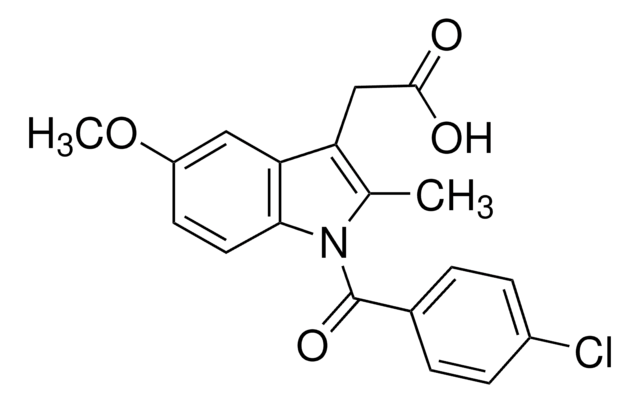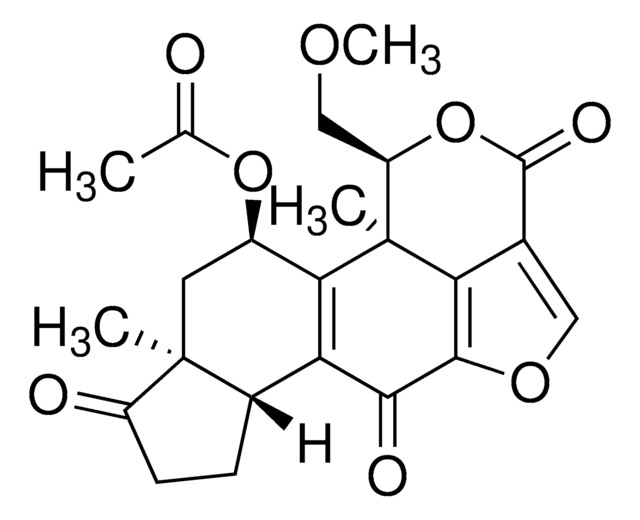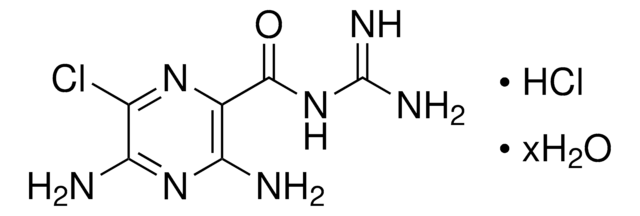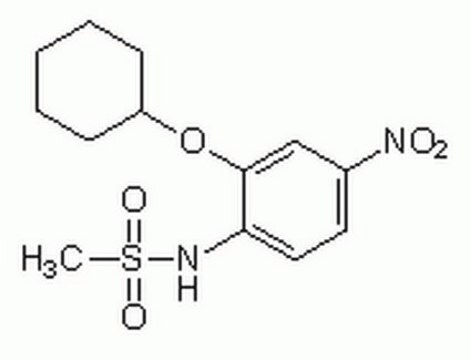Kluczowe dokumenty
B6309
(R)-Butaprost
≥98% (HPLC)
Synonim(y):
(1R,2R,3R)-3-Hydroxy-2-[(1E,4R)-4-hydroxy-4-(1-propylcyclobutyl)-1-butenyl]-5-oxo-cyclopentaneheptanoic acid methyl ester
About This Item
Polecane produkty
Poziom jakości
Próba
≥98% (HPLC)
Formularz
oil
kolor
light yellow
rozpuszczalność
DMSO: freely soluble
ethanol: freely soluble
inicjator
Bayer
temp. przechowywania
−20°C
ciąg SMILES
CCCC1(CCC1)[C@H](O)C\C=C\[C@H]2[C@H](O)CC(=O)[C@@H]2CCCCCCC(=O)OC
InChI
1S/C24H40O5/c1-3-14-24(15-9-16-24)22(27)12-8-11-19-18(20(25)17-21(19)26)10-6-4-5-7-13-23(28)29-2/h8,11,18-19,21-22,26-27H,3-7,9-10,12-17H2,1-2H3/b11-8+/t18-,19-,21-,22-/m1/s1
Klucz InChI
XRISENIKJUKIHD-LHQZMKCDSA-N
Zastosowanie
Działania biochem./fizjol.
Cechy i korzyści
Kod klasy składowania
11 - Combustible Solids
Klasa zagrożenia wodnego (WGK)
WGK 3
Temperatura zapłonu (°F)
Not applicable
Temperatura zapłonu (°C)
Not applicable
Środki ochrony indywidualnej
Eyeshields, Gloves, type N95 (US)
Wybierz jedną z najnowszych wersji:
Masz już ten produkt?
Dokumenty związane z niedawno zakupionymi produktami zostały zamieszczone w Bibliotece dokumentów.
Nasz zespół naukowców ma doświadczenie we wszystkich obszarach badań, w tym w naukach przyrodniczych, materiałoznawstwie, syntezie chemicznej, chromatografii, analityce i wielu innych dziedzinach.
Skontaktuj się z zespołem ds. pomocy technicznej







